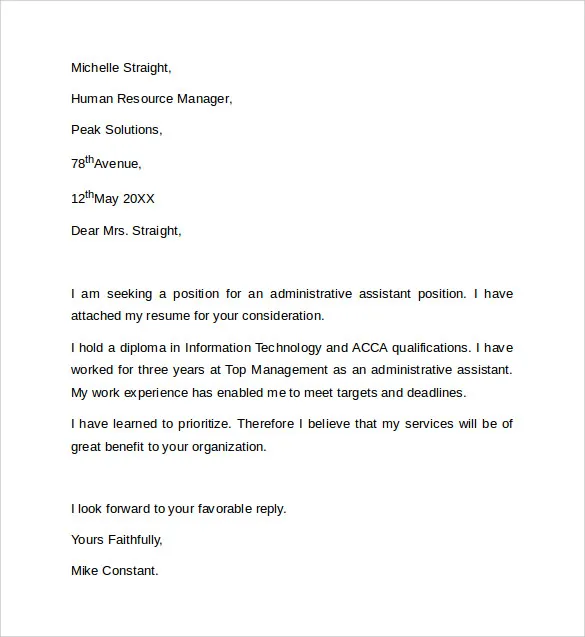What is an Administrative Cover Letter?
An administrative cover letter is a crucial document that accompanies your resume when applying for administrative positions. It serves as your introduction to the hiring manager, providing a concise overview of your skills, experience, and qualifications. Unlike a resume, which lists your accomplishments, a cover letter allows you to articulate your personality, express your enthusiasm for the role, and explain why you are the ideal candidate. A well-crafted cover letter demonstrates your attention to detail, communication skills, and understanding of the job requirements, increasing your chances of landing an interview. It’s your first opportunity to make a positive impression and distinguish yourself from other applicants. Using an administrative cover letter template can significantly streamline the process, providing a structured framework to effectively showcase your capabilities and tailor your application to specific job postings. This guide will provide all of the essentials.
Key Components of a Successful Cover Letter
A strong administrative cover letter template incorporates several key components to ensure its effectiveness. These elements work together to present a compelling case for your candidacy. Starting with your contact information and the date, followed by the hiring manager’s details, sets a professional tone. The salutation must be personalized to the hiring manager whenever possible, using their name to show that you’ve taken the time to research the company. The body paragraphs are the heart of the letter, where you express your interest, highlight relevant skills and experiences, showcase achievements, and conclude with a call to action. Proper formatting, including font choice, margins, and spacing, enhances readability. Proofreading is essential to eliminate errors. Finally, tailoring your cover letter to each job, using action verbs, and avoiding common mistakes are vital for a winning application.
Contact Information & Date
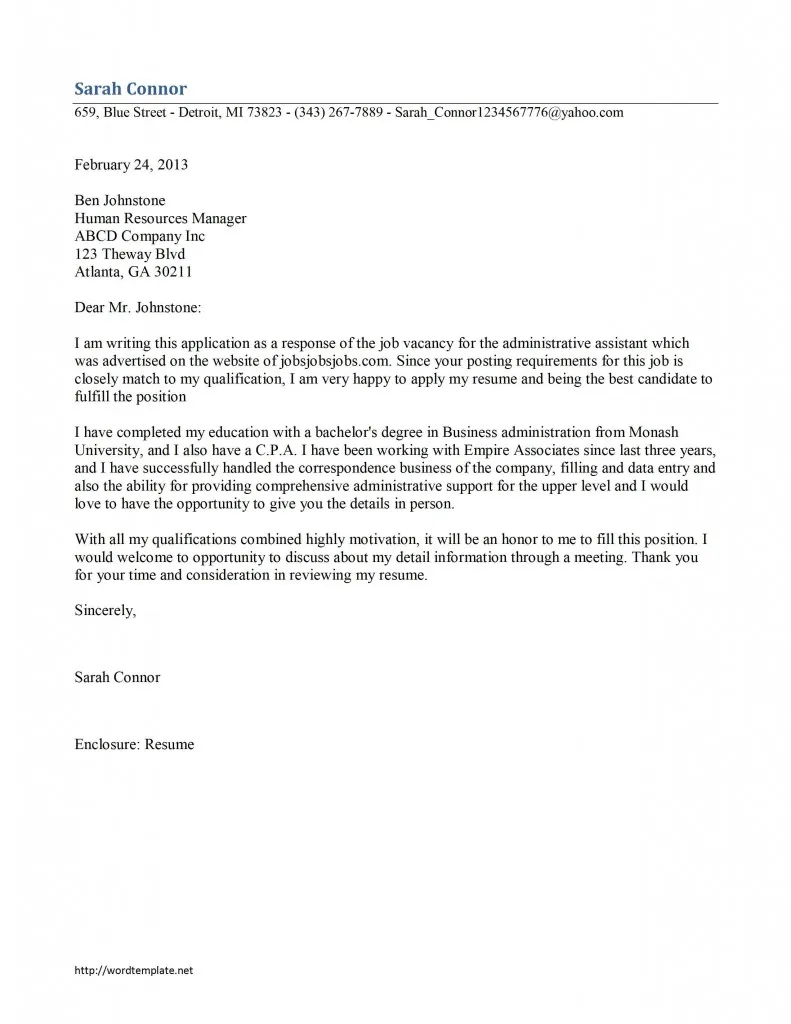
At the top of your cover letter, you should include your contact information. This typically includes your full name, phone number, email address, and sometimes your LinkedIn profile URL. Ensure this information is accurate and up-to-date, as it’s how the hiring manager will reach you. Following your contact information, include the date. Use the standard format (e.g., Month Day, Year) to maintain a professional appearance. This section helps establish the letter’s authenticity and provides easy access to your contact details. It’s a small but essential step in creating a polished and complete cover letter, showcasing your attention to detail, a critical quality for any administrative professional. Using a cover letter template helps format this correctly.
Hiring Manager’s Information
Directly below your contact information and the date, you should include the hiring manager’s details. Start with their full name and title. If possible, find out the hiring manager’s name by researching the company’s website or LinkedIn. Addressing the letter to a specific person demonstrates that you’ve taken the time to research the company and the role. If you are unable to find the hiring manager’s name, you can use a general title like “Hiring Manager” or “Recruiting Team.” Following the name and title, include the company’s name and address. This section shows your professional approach and attention to detail, setting a positive tone from the start. Accuracy here is important; always double-check the spelling of names and company details.
Salutation
The salutation is your initial greeting in the cover letter, and it sets the tone for the rest of your communication. Ideally, the salutation should be personalized to the hiring manager’s name, such as “Dear Mr./Ms. [Last Name]”. If you cannot find the hiring manager’s name, alternatives include “Dear Hiring Manager,” “Dear [Department Name] Team,” or a general greeting like “To Whom It May Concern.” Avoid generic salutations such as “Dear Sir/Madam,” as they appear impersonal. A personalized salutation indicates that you’ve put in effort, which can make a favorable impression. Using the correct salutation demonstrates attention to detail and shows respect. A well-crafted salutation can grab the reader’s attention and encourages them to continue reading.
Body Paragraph 1 Expressing Interest
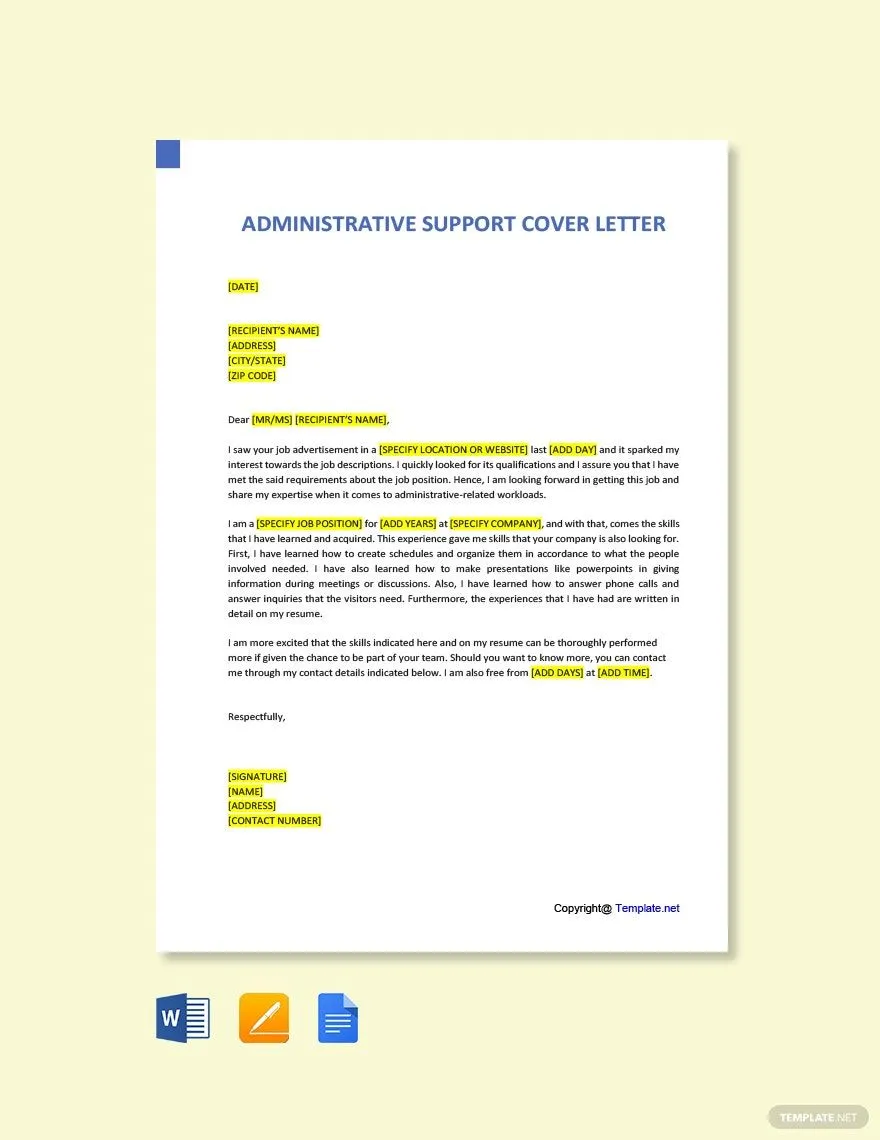
The first body paragraph should clearly express your interest in the administrative position and the company. State the specific job you are applying for and where you saw the job posting (e.g., company website, LinkedIn, job board). Briefly mention why you are interested in the role and the company, highlighting aspects that appeal to you. Show genuine enthusiasm for the opportunity. Briefly introduce your relevant skills and experiences. This paragraph should serve as an engaging introduction, making the hiring manager want to read more. Keep this section concise and to the point, ensuring you immediately capture the reader’s attention. Demonstrate your understanding of the company and the position’s requirements. A well-crafted opening paragraph sets the stage for the rest of the cover letter, showcasing your enthusiasm.
Body Paragraph 2 Highlighting Relevant Skills
In the second body paragraph, highlight the skills and qualifications that directly relate to the job requirements. Review the job description carefully and identify the key skills the employer is seeking. Provide specific examples of how you have demonstrated these skills in previous roles. This is your opportunity to show that you possess the necessary abilities to excel in the position. Use strong action verbs to describe your accomplishments and responsibilities. Quantify your achievements whenever possible by using numbers to show the impact you have made in previous roles. Show what you bring to the table that makes you a good fit. This paragraph should be targeted to the role, showcasing your ability to meet the hiring manager’s needs. Show that your skill aligns with the requirements.
Body Paragraph 3 Showcasing Achievements
The third body paragraph focuses on showcasing your achievements, providing concrete evidence of your capabilities. Instead of simply listing responsibilities, detail your accomplishments, quantifying them with numbers and specific results whenever possible. For example, if you improved office efficiency, state the percentage of improvement or the time saved. Use the STAR method (Situation, Task, Action, Result) to structure your examples, providing context, outlining your actions, and highlighting the positive outcomes. Emphasize achievements that align with the job requirements and demonstrate your value to the company. Focus on accomplishments that highlight your ability to handle tasks efficiently and effectively. This paragraph should clearly communicate your impact and value in previous roles.
Body Paragraph 4 Closing with a Call to Action
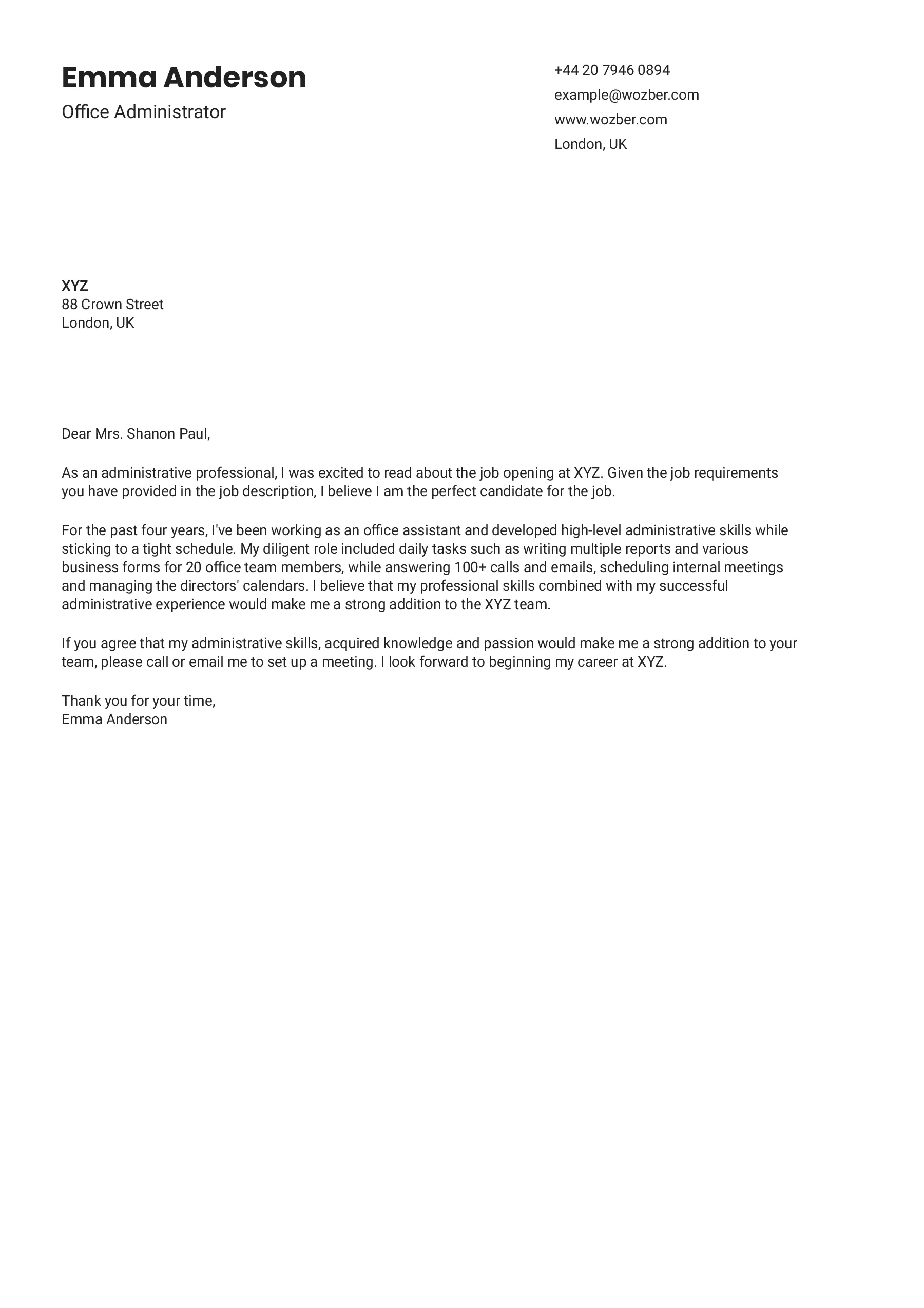
The final body paragraph should wrap up your cover letter with a call to action. Reiterate your interest in the position and the company. Express your enthusiasm for the opportunity to discuss your qualifications further. Indicate your availability for an interview and provide your contact information again for easy reference. Thank the hiring manager for their time and consideration. This section should leave a strong, positive impression and encourage the reader to take the next step in the hiring process. End on a confident and proactive note, expressing your eagerness to move forward. A well-crafted call to action makes the hiring manager feel you’re serious.
Complimentary Close & Signature
Following your final body paragraph, use a professional complimentary close, such as “Sincerely,” “Best regards,” or “Thank you.” These closings provide a polite and respectful way to end your cover letter. After the complimentary close, leave a space for your signature. If submitting a physical copy, sign your name in ink. If submitting an electronic copy, you can type your full name. Ensure your signature is legible and matches the name on your cover letter and resume. A clear and professional signature adds a personal touch and reinforces the professional tone of your application. This last step shows you pay attention to detail.
Formatting Your Cover Letter for Readability
Proper formatting is essential for making your cover letter easy to read and visually appealing. A well-formatted cover letter is more likely to be read carefully, increasing your chances of making a positive impression. Consistent formatting standards throughout the document create a professional and polished appearance, demonstrating your attention to detail. Use clear, concise language and organized paragraphs to convey your message effectively. Well-formatted cover letters are easier to read and digest, keeping the reader engaged. Effective formatting increases the impact of your content, highlighting your skills and making you stand out. This section covers the key elements of formatting.
Font and Font Size
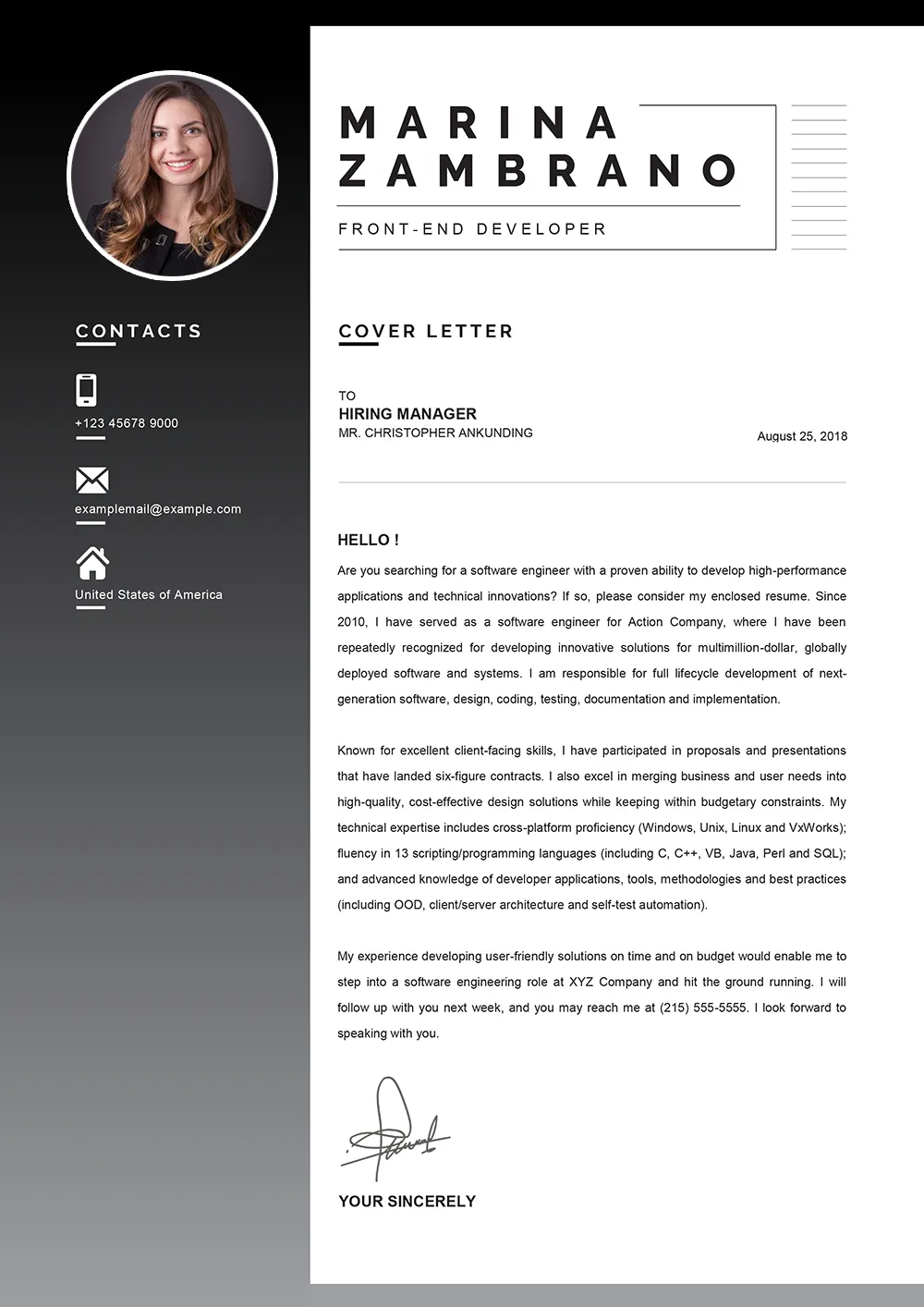
Choose a professional and easy-to-read font for your cover letter. Common fonts such as Times New Roman, Arial, Calibri, and Helvetica are good choices. Avoid overly decorative or unusual fonts, as they can be distracting and make your letter look unprofessional. Keep the font size between 10 and 12 points for easy readability. Ensure the font size is consistent throughout the document. Proper font choice and size enhance the readability of your cover letter, making it easier for the hiring manager to focus on your content. A standard, professional font creates a positive first impression, showing your professionalism and attention to detail. The goal is to keep the document clean and easy to read, helping the reader to focus on your key skills and experience.
Margins and Spacing
Set standard margins (1 inch on all sides) to create a balanced and visually appealing layout. Proper margins prevent the text from appearing cramped. Use single spacing within paragraphs and double spacing between paragraphs to provide adequate white space. This spacing helps to separate ideas and makes the document easier to read. Ensure the document has a clear and organized appearance. Maintain a consistent layout throughout the entire cover letter. Consistent margins and spacing ensure a professional look, and prevent your document from appearing crowded or disorganized. A well-spaced document is easier to scan and digest, making it more likely that the hiring manager will read your entire letter.
Proofreading and Editing
Before submitting your cover letter, proofread and edit it carefully for any errors. Check for typos, grammatical errors, and spelling mistakes. These errors can undermine your credibility and make you appear unprofessional. Use a grammar and spell checker, but don’t rely on it entirely. Read your cover letter aloud to catch awkward phrasing or sentences that don’t flow well. Ask a friend, family member, or career advisor to review your letter. They may catch errors you missed. Ensure your cover letter is clear, concise, and easy to understand. Proofreading and editing are crucial steps in the cover letter process, ensuring your message is conveyed professionally. A polished cover letter shows attention to detail and increases your chances of making a positive impression. Always double-check.
Customizing Your Cover Letter Template
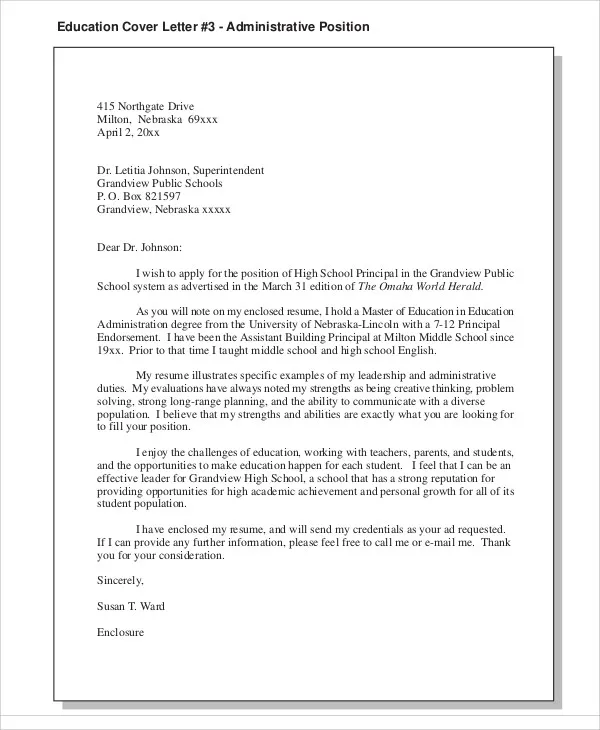
Customizing your cover letter template to fit the specific job description is essential for demonstrating your suitability for the role. Start by carefully reviewing the job posting and identifying the key requirements, skills, and qualifications the employer is looking for. Tailor your cover letter to highlight these specific aspects. Show the employer you understand the role and how you can contribute. Use keywords and phrases from the job description within your cover letter. Modify the sections of the template to match your specific experiences and accomplishments. Quantify your achievements to show your impact in previous roles. By tailoring your cover letter, you demonstrate your interest in the role and show the hiring manager you have the right qualifications.
Tailoring to the Job Description
The most effective administrative cover letters are tailored to the specific job description. Read the job posting carefully and make a list of the required skills, experiences, and qualifications. Then, within your cover letter, address each of these points directly. Show how your skills and experiences align with what the employer is seeking. Provide specific examples of how you have demonstrated these skills in your previous roles, using the STAR method to showcase your achievements. By customizing your letter to the job description, you show the hiring manager that you have taken the time to understand their needs. Ensure that your cover letter contains the keywords and phrases from the job description. This targeted approach significantly increases your chances of making a favorable impression.
Highlighting Specific Skills and Experiences
When customizing your cover letter, make sure to highlight specific skills and experiences relevant to the administrative role. Identify the key skills and qualifications listed in the job description, such as organization, communication, and attention to detail. Provide concrete examples of how you have successfully used these skills in previous positions. Include examples that highlight your ability to manage calendars, handle correspondence, and support administrative tasks. Tailor your experiences to directly address the employer’s requirements. Quantify your achievements whenever possible. This ensures the hiring manager sees the direct relevance of your experience to the job. By emphasizing specific skills and experiences, you demonstrate that you have the capabilities to succeed in the administrative position.
Using Action Verbs
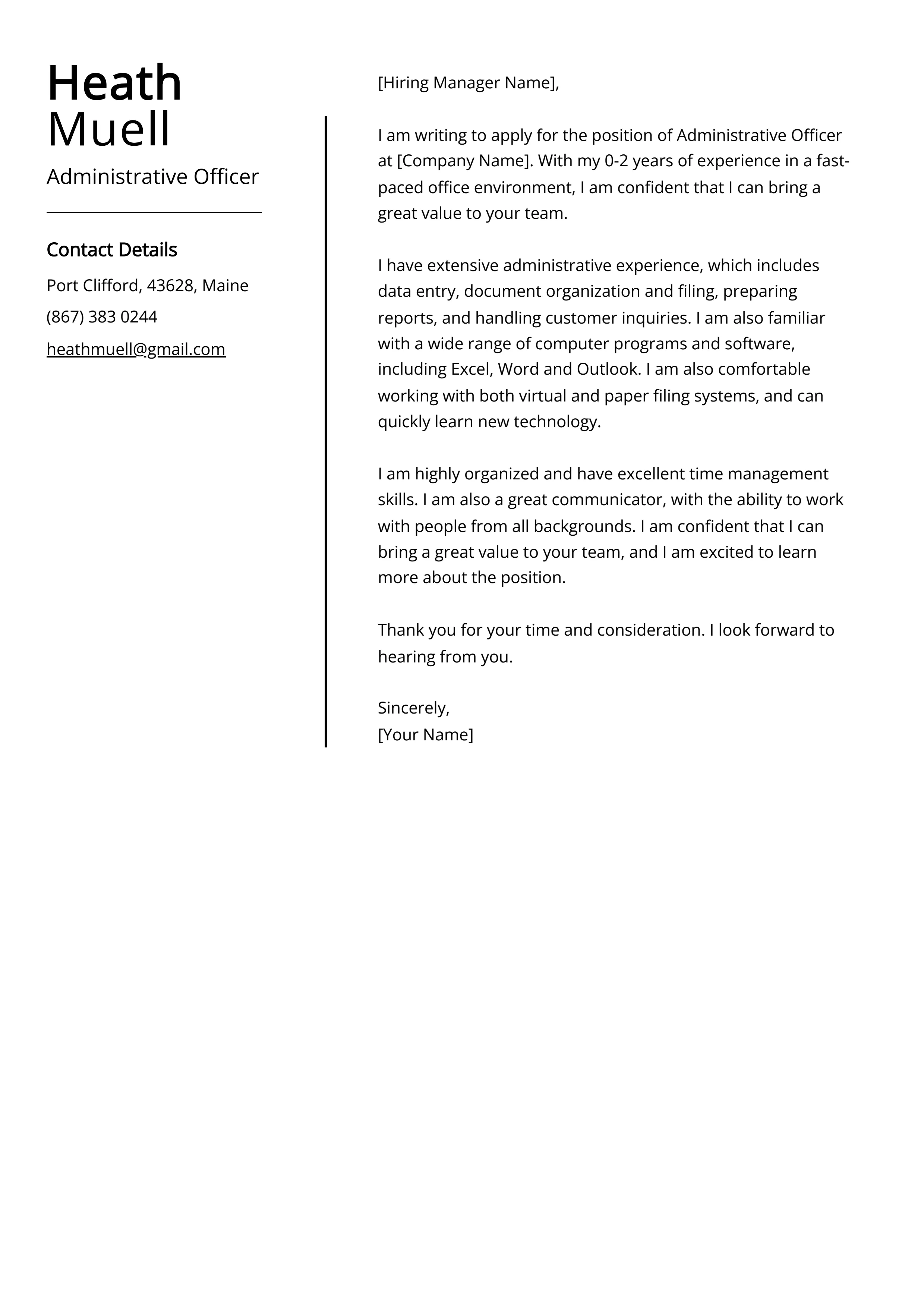
Using strong action verbs throughout your cover letter can make your accomplishments more impactful and engaging. Action verbs help to bring your experiences to life and demonstrate your ability to take initiative and achieve results. Start your sentences with verbs that describe your actions and responsibilities, such as “managed,” “coordinated,” “organized,” “implemented,” “streamlined,” or “achieved.” Avoid passive language and instead focus on actively describing what you did. This approach makes your cover letter more dynamic and shows your capabilities and contributions. Action verbs make your cover letter more memorable and make it clear that you are a proactive candidate who drives results. This technique can enhance the readability and effectiveness of your cover letter.
Common Mistakes to Avoid
Avoiding common mistakes is crucial for creating an effective cover letter. These mistakes can easily undermine your application and decrease your chances of getting an interview. One of the most significant errors is making typos and grammatical errors. These errors make your cover letter appear unprofessional. Another common mistake is using a generic cover letter that isn’t tailored to the specific job. Generic letters lack the details to show an understanding of the role. Lack of research can also make a negative impression. This section covers the common mistakes that can impact your application, along with tips on how to avoid them.
Typos and Grammatical Errors
Typos and grammatical errors are among the most damaging mistakes you can make on your cover letter. They can damage your credibility and make you look unprofessional. Always carefully proofread your cover letter before submitting it. Use a grammar and spell checker, but do not rely solely on them. Read your cover letter aloud to catch awkward phrasing or sentences that do not flow well. Ask someone you trust, such as a friend or family member, to review your cover letter. Double-checking ensures that the cover letter is polished and presents a professional image. Catching and correcting these errors will significantly improve your chances of making a favorable impression on the hiring manager.
Generic Cover Letters
Using a generic cover letter, one that is not tailored to the specific job and company, is a major mistake. Hiring managers can easily identify a generic cover letter, which makes your application seem less valuable. A generic letter won’t show that you understand the role or the company’s needs. Instead, customize each cover letter to match the job posting, highlighting the skills and experiences relevant to the role. Show that you have taken the time to understand the company’s values and goals. This shows your interest in the position and the company. Generic cover letters are a missed opportunity to show your personality and demonstrate how well you align with the job. Tailoring each cover letter to the specific job maximizes your chances of getting an interview.
Lack of Research
A lack of research can be another significant error when applying for administrative positions. It shows the employer that you have not put in the effort to understand the company, the role, or the hiring manager. Before writing your cover letter, research the company’s mission, values, and recent news. If possible, find out the hiring manager’s name. Include details in your cover letter that show you understand the company. Mention the company’s values and goals. Demonstrate your enthusiasm and your specific interest in working for the company. This effort indicates that you have a genuine interest and that you are prepared. Your level of interest and your attention to detail will make a positive impression.
Cover Letter Template Examples
Reviewing cover letter template examples is a great way to understand how to structure and format your own. These templates can provide inspiration and guidance, and offer different styles and approaches. They show how to effectively present your qualifications and highlight relevant skills for administrative roles. There are various examples for different administrative positions, each tailored to the specific needs of the role. Make sure to adjust the template examples to your experience and the job requirements.
Administrative Assistant Cover Letter Example
An administrative assistant cover letter should highlight skills that are crucial to this role. Skills such as organization, communication, time management, and proficiency in Microsoft Office are key. The letter should express enthusiasm for providing administrative support. Mention examples of how you’ve handled a wide range of administrative tasks. Tailor the examples to the specific requirements listed in the job description. Emphasize your ability to maintain efficient office operations. Show attention to detail, your organizational skills, and your customer service skills. Use action verbs and quantify your accomplishments. This helps demonstrate your capabilities.
Office Manager Cover Letter Example
An office manager cover letter should present your leadership skills, as well as your organizational abilities. Highlight your experience in overseeing office operations and managing staff. Showcase your skills in budgeting, vendor management, and ensuring office efficiency. Show how you have implemented improvements in administrative processes. Quantify your achievements whenever possible. Include examples that demonstrate your ability to create a positive and productive work environment. Mention your experience with office management software. Highlight any experience in managing budgets, and show how you’ve created efficiencies. A successful office manager cover letter demonstrates your management expertise.
Executive Assistant Cover Letter Example
An executive assistant cover letter should showcase your skills in providing high-level support to executives. Highlight your ability to manage complex schedules, handle confidential information, and provide administrative support. Mention your experience with managing travel arrangements, preparing presentations, and coordinating meetings. Provide examples of how you have supported executives. Demonstrate your attention to detail, your communication skills, and your discretion. Show your understanding of the executive’s needs. A winning cover letter should showcase your strong organizational skills and your ability to support high-level executives.
Where to Find Cover Letter Templates
There are several places to find administrative cover letter templates that can help you get started. These templates provide a structured framework to help you showcase your skills. From online resources to word processor templates, here are some of the best places to find cover letter templates to help you apply for administrative roles.
Online Templates
There are many websites that offer free and premium cover letter templates. Some popular options include resume-now.com, and Canva.com. These sites offer a wide variety of templates to help you create a professional-looking cover letter. Some templates are specifically designed for administrative roles. Online templates often allow you to customize the format and content of your cover letter. Choose a template that matches your style and the job requirements. Always be sure to adapt the template to your specific skills, experience, and the job posting. Online templates offer a convenient and user-friendly way to create an effective cover letter.
Word Processor Templates
Many word processors, such as Microsoft Word and Google Docs, include built-in cover letter templates. These templates provide a convenient starting point for your application. They often come with pre-formatted sections and suggestions for content. These templates are easily customizable to fit your specific needs. You can change the fonts, colors, and layout to match your style. Word processor templates are a great option for those who want to create a cover letter from scratch. They offer a balance of structure and flexibility.
Tips for Sending Your Cover Letter
Sending your cover letter effectively is just as important as the content itself. It should be easy for the hiring manager to access and read. Here are some tips for sending your cover letter. Proper formatting and file format are essential for ensuring your application is easy to read. The email body is where you can deliver your cover letter in a professional and effective way. Following up can show your initiative and maintain your application. These tips will help make sure your cover letter is read.
File Format
When sending your cover letter, always save it as a PDF file. This format ensures that your formatting and layout remain consistent, regardless of the device or software used to open it. PDF files are also less prone to compatibility issues than other formats. Use a clear, descriptive file name such as “YourName_CoverLetter.pdf” to make it easy for the hiring manager to identify your document. A professional file format helps you maintain control over the document’s appearance and maintains its professional presentation. This small detail ensures the cover letter maintains its intended formatting.
Email Body
When sending your cover letter via email, write a brief and professional email body. Start with a polite greeting, such as “Dear Mr./Ms. [Last Name]”. Briefly restate your interest in the position and mention that you have attached your cover letter and resume. Keep the email concise and to the point. Thank the hiring manager for their time and consideration. Close with a professional closing such as “Sincerely” and your full name. Your email body should act as a summary. Be sure to use proper grammar and spelling. This introductory email gives context to your attached documents.
Follow-up
After submitting your cover letter and resume, follow up with the hiring manager to express your interest in the position. Follow up approximately one week after submitting your application. Send a polite email, restating your interest in the role and asking if they have any questions. Keep your follow-up concise and professional. This shows that you are genuinely interested in the position. Following up reminds the hiring manager of your application. This small step can help you stand out from the competition and show that you take initiative.
Conclusion
Crafting a winning administrative cover letter can significantly improve your chances of securing an interview. By following the guidelines and advice in this guide, you can create a compelling cover letter that highlights your skills and experience. Remember to customize your cover letter to match the job description, use strong action verbs, and avoid common mistakes. Choose the right administrative cover letter template that reflects your personal brand. Proofread and edit carefully. Your cover letter is your first impression, so make it count. By investing time and effort into your cover letter, you demonstrate your professionalism and increase your chances of landing your dream job. Following these tips will make you stand out and secure an interview.
